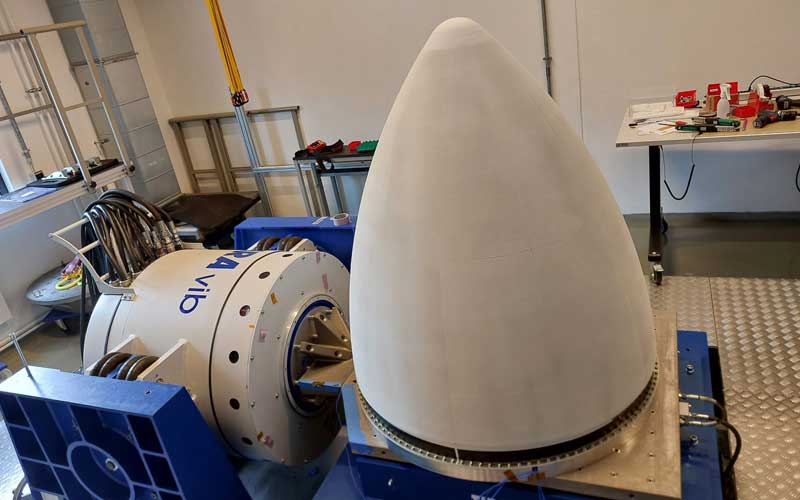
The German space agency DLR has announced that it has begun testing the qualification model of a fairing that will be used aboard the reusable booster demonstrator, Callisto.
Work on the Cooperative Action Leading to Launcher Innovation in Stage Toss back Operations (Callisto) demonstrator began in 2015 as a joint effort between CNES, DLR, and Japan’s national space agency, JAXA. The aim of the project is to mature key technologies that will enable the development of future reusable launch vehicles.
Once complete, Callisto will stand at approximately 13 metres tall and have a lift-off mass of around four tonnes. The demonstrator is expected to be launched on its inaugural flight between late 2025 and early 2026 from the Guiana Space Centre’s revamped Diamant launch facility. A total of 10 test flights are planned.
In an 18 September update, the DLR Institute of Structures and Design revealed that the qualification model of the demonstrator’s fairing was in the middle of a test campaign. The update added that it had just completed “shaker tests” at the DLR Institute of Space Systems’ facilities in Bremen.
The demonstrator’s fairing will reduce aerodynamic drag during ascent and house the GNSS antenna. In addition to the fairing, DLR is also responsible for the control surfaces, liquid hydrogen tank, flight software, approach and landing system, and navigation system.
According to a CNES timeline, the project’s detailed design phase is expected to be completed before the end of 2024. Vehicle integration will then be completed in Japan in 2025, clearing the way for an inaugural flight.




